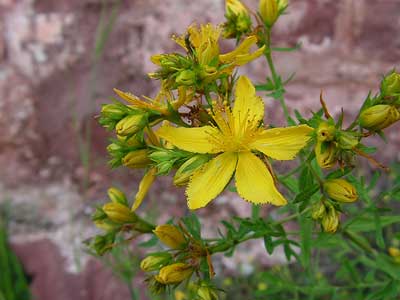2405 Plants are Among Endangered Species

Referring to the 8000 plant species in Iran, Moghanloo noted that 1727 species are endemic and 2405 species are endangered. She also added, “A large percentage of endemic and native species are among the endangered ones.”
According to ISNA, Maryam Moghanloo said that Iran has a good and suitable variety of plants in a way that it is considered as one of the main endemisms, and about 8000 plant species have been identified. It is believed that this number of species include 80 percent of plant species of Europe.
She further stressed that among the middle eastern countries, Iran has unique varieties of plants and stated, “Out of 8000 plant species, 1727 endemic plants have been identified and registered. Therefore, due to these varieties, our country is regarded as special in all forms. This is considered a valuable genetic resource.”
Head of plants Department of Natural History and Genetic Resources Museum referring to the threats attacking the plant varieties, these recent years, said, “These threats are divided into two categories, firstly, natural factors such as, the limitations of plant habitats, the exclusivity of the species to certain environmental conditions, natural disasters, such as, droughts, storms and floods. Secondly, the man-made threats, including environmental manipulations, excessive grazing of the livestock, excessive constructions, road constructions, environmental pollution, and the uncontrolled use of toxic chemicals.”
Concerning the changes of the rich plant varieties due to natural and man-made damages in the recent years, she added, “Out of the 8000 plant species, 2405 species are endangered among which the large percentage are endemic and native species of Iran.”
She stressed that, the high distribution of plant species throughout the country, and their accessibility difficulties, have made it a problem to exactly monitor them. She then stated, “Unfortunately, a precise and complete study regarding the monitoring of the plant species has not taken place in the recent years, and only a predicting analytics is presented in this regard. According to IUCN classification, out of 2405 threatened species, 20 species are endangered and 431 species are vulnerable.”
Moghanloo, an expert in plant species, said, “Due to the natural and man-made threats in these past years, the plant species are being increasingly endangered. Therefore, the Department of Environment has made it a priority to identify and preserve the plant species, especially in those areas under its management, which are mainly those places that are rich in floras. So much so, that these recent years, it is part of the technical projects of the Natural History and Genetic Resources Museum to identify, preserve and revive those threatened species in the country.”
Head of plants Department of Natural History and Genetic Resources Museum pointed out that the biggest and most important guardians of the plants are the people, themselves and said, “If the local communities that either use the plants as food or economically exploit them, pay attention to the fact that these plants give them life, will oblige themselves to endeavor to save these plants’ existence, and as they are using them , provide a means to preserve them, too. Also, if they try to cultivate the same plants or introduce alternative cultivates, we will witness a great change in the plant varieties of our country.”
“One of the main responsibilities of the Department of Environment is education, the raising of families’ awareness, as well as the schools’, high school students’ and local communities’.” She noted. “The representatives of this organization are present in different areas and as teams, hold classes there, and educate people on the threatened or endangered species and the local communities’ role on the preservation and revival of these plant species and other floras.”
According to her, if our local communities are able to plant and grow the seeds of the plants in the same primary habitats, (instead of excessive and inappropriate harvest (uprooting the plants) in order to use them as food, medicine, or any economic exploitation) they will assist a great deal in reviving of these plant species. Also, by not taking the livestock for grazing in those seasons when the plants are seeding and reproducing, we can protect the damaged and endangered plants. This is how we can help the Department of Environment to preserve a healthy and sustainable environment for the future generation.
- Comments submitted by you will be published by administrators after approval.
- Comments that contain mohareb or worse will not be published.
- Comments that will not be published other than English or non-English.

Send Comment
Total comments : 0 Pending review : 0 Published : 0